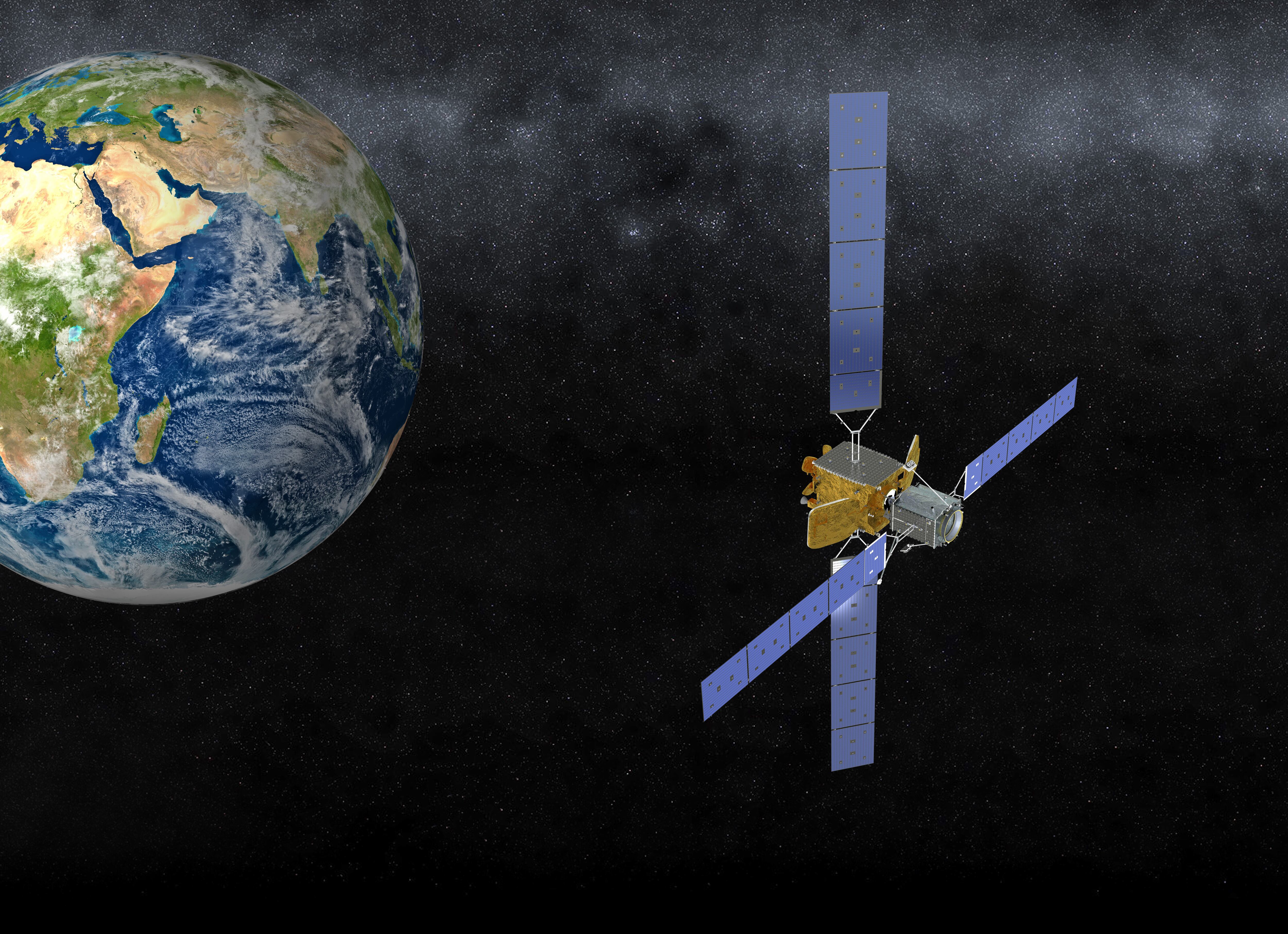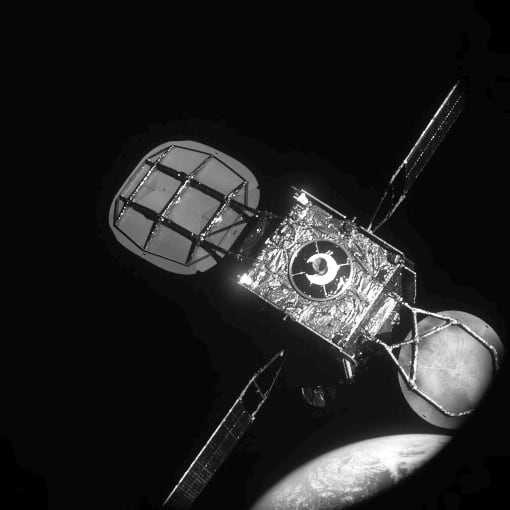SpaceLogistics will work with DARPA to develop a robotic servicing spacecraft after the company successfully docked its mission extension vehicle with a commercial satellite on orbit, Northrop Grumman announced March 4.
SpaceLogistics, a Northrop Grumman subsidiary, will be DARPA’s commercial partner for the agency’s Robotic Servicing of Geosynchronous Satellites (RSGS) program, an effort to create the first commercial spacecraft with a robotic arm that can perform repairs, augmentation, assembly, inspection or relocation of other spacecraft already on orbit.
The program could offer commercial and military customers the ability to install new payloads on aging satellites, giving them new or upgraded capabilities without having to launch an entirely new satellite. The technology would also allow customers to repair or transport satellites that don’t deploy correctly or are near the end of their service period, giving them a second lease on life.
RELATED

DARPA will provide the robotic payload while SpaceLogistics will provide the vehicle.
The robotic payload was developed and integrated by the Naval Research Laboratory. It has two large 2 meter robotic arms as well as several tools and sensors to assist with its mission.

Joe Parrish, program manager for the Robotic Servicing of Geosynchronous Spacecraft program at DARPA, said at the 2019 Global Satellite Servicing Forum in October that the agency expected to name a commercial partner by the end of 2019, with plans to have their robotic payload on orbit in 2022.
The SpaceLogistics Mission Robotic Vehicle is a successor to the company’s Mission Extension Vehicle. Launched in October, MEV-1 completed the first on orbit docking of two commercial spacecraft when it successfully connected with an Intelsat satellite Feb. 25. While docked, MEV-1 will use its own propulsion system and fuel to supplement the Intelsat satellite, which had largely used up its fuel supply and was approaching the end of its service life. Then, MEV-1 will return the satellite to its orbit and active service, extending its service life by five years before sending the commercial spacecraft to a decommissioning orbit and moving on to its next client.
“Our selection as DARPA’s commercial partner expands our leadership in space logistics,” said SpaceLogistics President Tom Wilson. “The new robotics technology on this mission advances our vision to build a fleet of satellite servicing vehicles that provide customers with a variety of options to select the type of life-extension or in-orbit repairs they need.”
In addition to those vehicles, SpaceLogistics is developing what it calls Mission Extension Pods, which will dock with on orbit satellites to aid their propulsion systems. The company says it will use its mission robotic vehicle to install the pods, offering up to six additional years of service life for aging satellites.
The Department of Defense has already expressed interested in utilizing SpaceLogistics services, with the Space Enterprise Consortium issuing a contract to SpaceLogistics to look into servicing four national security satellites.
Nathan Strout covers space, unmanned and intelligence systems for C4ISRNET.








